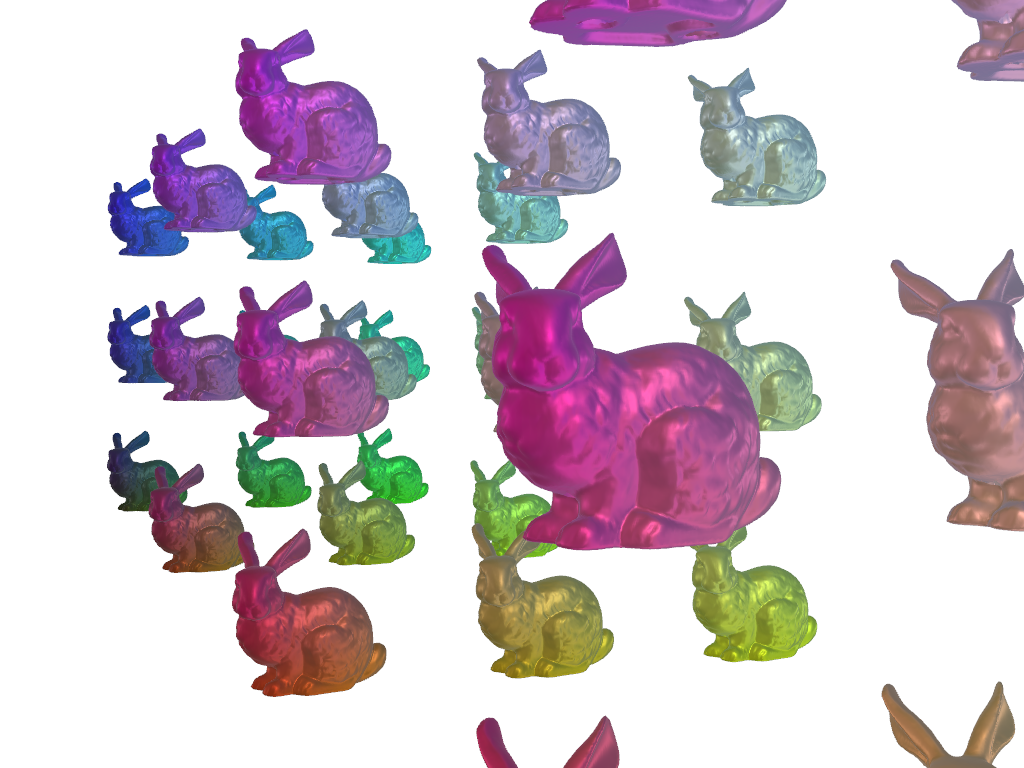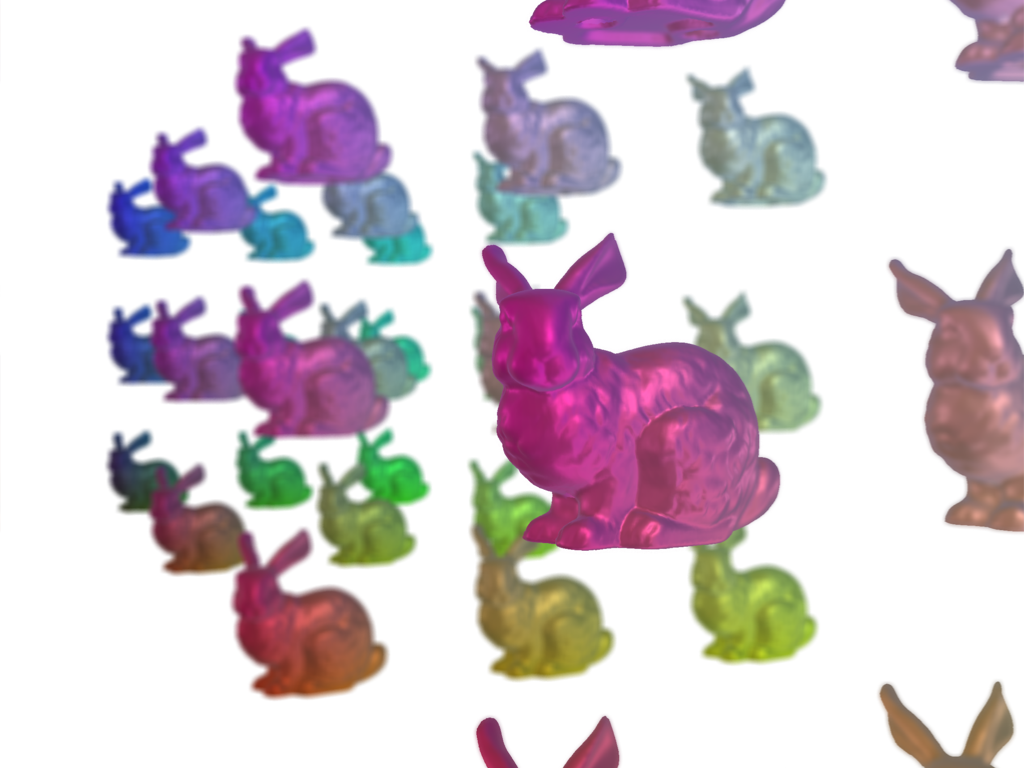Note
Go to the end to download the full example code.
Depth of Field Plotting#
This example shows how you can use enable_depth_of_field to highlight part of your plot.
from __future__ import annotations
import numpy as np
import pyvista as pv
from pyvista import examples
Generate a bunch of bunnies#
Create many bunnies using the glyph
filter.
# download the stanford bunny and rotate it into a good position
mesh = examples.download_bunny()
mesh = mesh.rotate_x(90, inplace=False).rotate_z(90, inplace=False).scale(4)
# We use a uniform grid here simply to create equidistantly spaced points for
# our glyph filter
grid = pv.ImageData(dimensions=(4, 3, 3), spacing=(3, 1, 1))
bunnies = grid.glyph(geom=mesh, scale=False, orient=False)
bunnies
Show the plot without enabling depth of field#
# convert points into rgba colors
colors = bunnies.points - bunnies.bounds[::2]
colors /= colors.max(axis=0)
colors *= 255
colors = colors.astype(np.uint8)
# obtained camera position with `cpos = pl.show(return_cpos)`
cpos = pv.CameraPosition(
position=(11.6159, -1.2803, 1.5338),
focal_point=(4.1354, 1.4796, 1.2711),
viewup=(-0.0352, -0.0004, 1.0),
)
# Since we're using physically based rendering (PBR), let's also download a
# skybox cubemap use it as an environment texture. For PBR to work well you
# should have a environment texture.
cubemap = examples.download_sky_box_cube_map()
pl = pv.Plotter()
pl.background_color = 'w'
pl.add_mesh(bunnies, scalars=colors, rgb=True, pbr=True, metallic=0.85)
pl.camera_position = cpos
pl.set_environment_texture(cubemap)
pl.show()

Show the plot while enabling depth of field#
pl = pv.Plotter()
pl.background_color = 'w'
pl.add_mesh(bunnies, scalars=colors, rgb=True, pbr=True, metallic=0.85)
pl.camera_position = cpos
pl.enable_depth_of_field()
pl.enable_anti_aliasing('ssaa')
pl.set_environment_texture(cubemap)
pl.show()

Total running time of the script: (0 minutes 25.281 seconds)